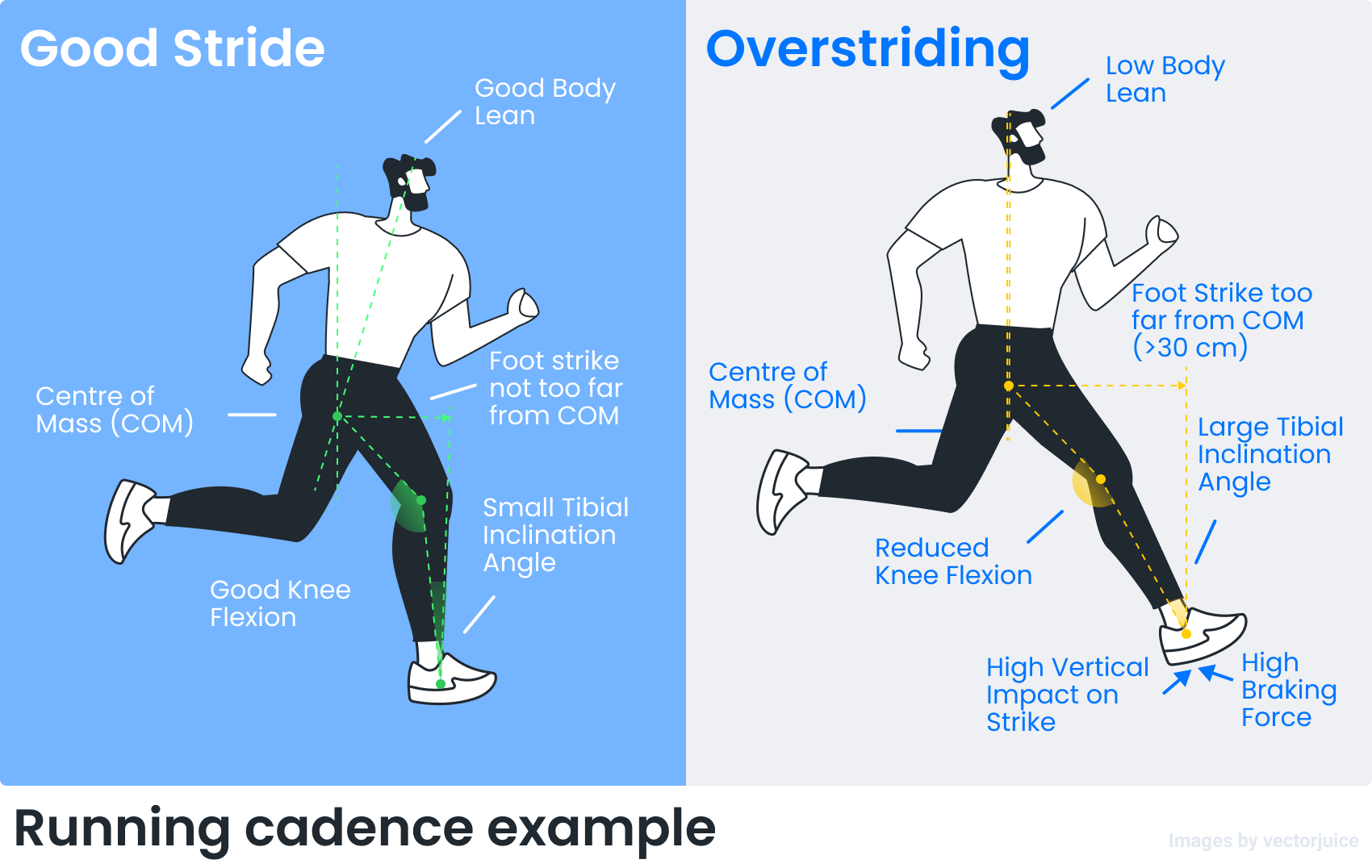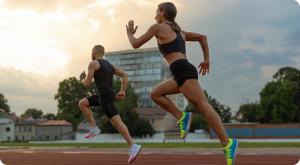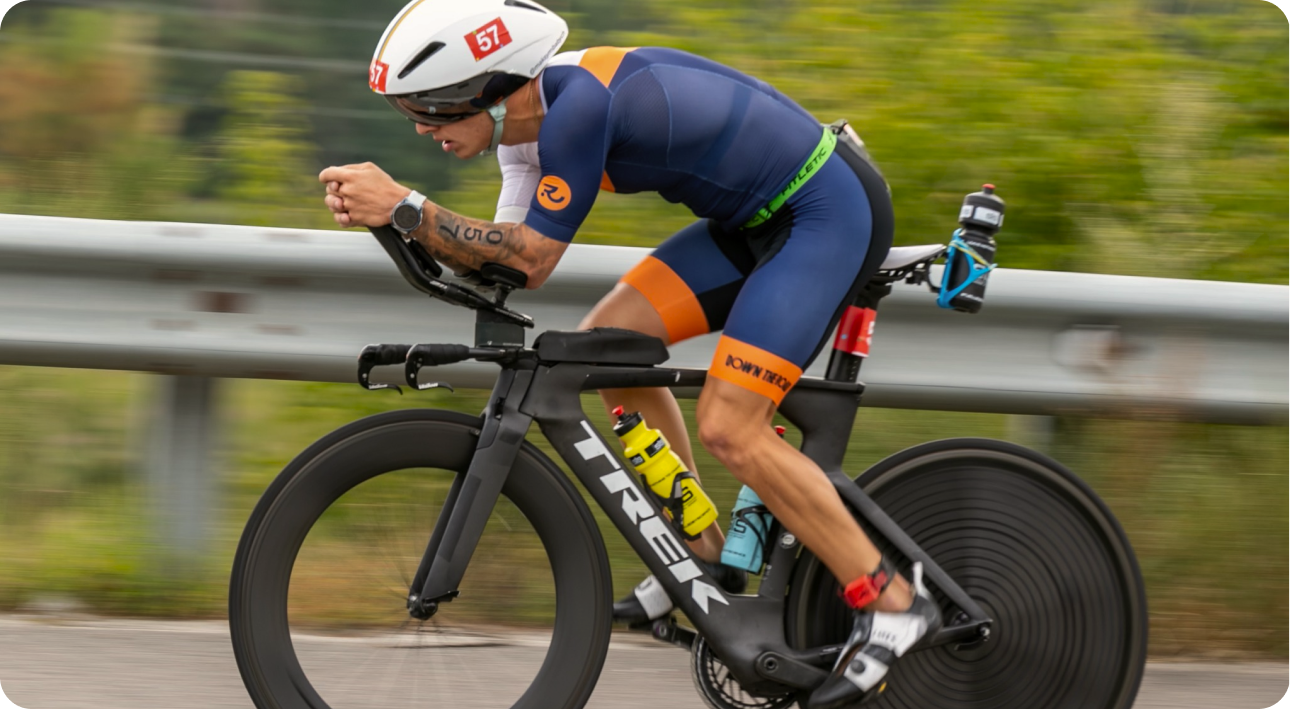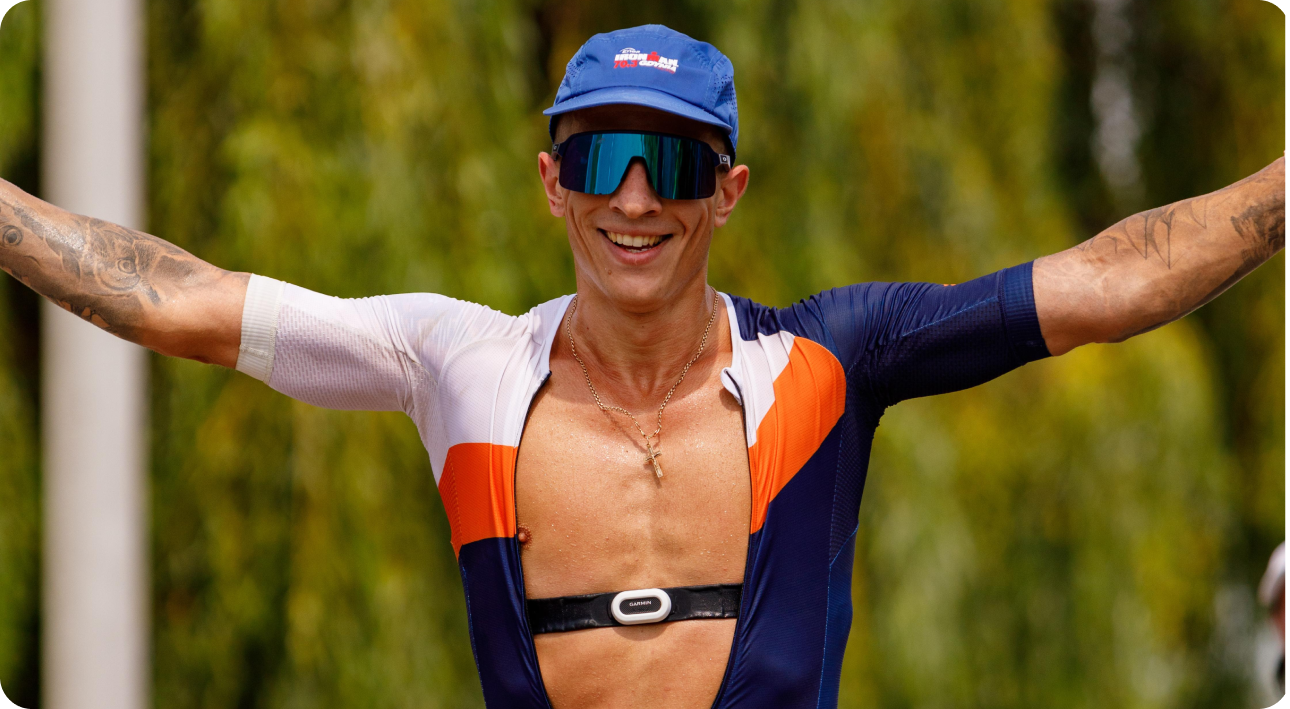How fast do your feet move when you’re running? Have you ever given it any thought?
Today we’ll be looking into running cadence or strides per minute, covering what it is, why it matters, and how to improve yours with drills and tips!
Unlock your potential
Dive into excellence with a comprehensive approach to triathlon training
What is Cadence, and Why Does it Matter?
Your running cadence is simply the number of steps you take per minute despite your running speed.
But there is a lot of confusion about the importance of cadence and what number to aim for. Let’s unwrap it.
Running at a higher cadence makes you more efficient. That means you can run at the same speed and feel less tired, which overall contributes to better performance.
Here is how it works:
When you take shorter and quicker steps while running, your foot tends to land closer to your body.
This means that when your foot hits the ground, it won’t hit with as much force, and it won’t cause as much slowing down (braking) as it would if your foot landed further out in front of you.
This can help reduce the force that pushes back against you from the ground, which means less strain on your body while you run.

How Do I Know My Current Running Cadence?
If you don’t know what your usual cadence is, you can find it easily by recording your run on a fitness tracker.
Once you finish your run, you will see your cadence along with other metrics such as speed, average time, and heart rate.
Just keep in mind that if your running also consists of walking, then the average cadence number will be inaccurate. In that case, you want to go into the run details on your fitness app and see the run intervals. There you will be able to see the run cadence.
In case you don’t use any fitness trackers, the good old counting method will work as well.
Count the number of times your right foot hits the ground in one minute while running. Then, multiply that number by two to get your total cadence (since each step involves both feet).
Alternatively, you can count the steps for 30 seconds and then double the number to get your cadence for one minute.
So, now that you know what running cadence is, and even calculated yours – what’s next? Let’s talk about the importance of cadence and the number you should strive for.
What is an Optimal Running Cadence?
The simple answer is – it depends.
The more complicated one is that your running cadence will be based on various factors.
One of them is your anatomy. For example, there is research that has shown that the ideal cadence for taller runners is lower than that for shorter runners.
Also, if you are an experienced runner, you probably don’t need to worry about your cadence too much. This is because you have an in-built sense of your good cadence and naturally gravitate longer strides towards that number.
In fact, we have found research to illustrate this point. According to the study, experienced runners will run within 3% of their mathematically derived optimum cadence.
However, these insights are not very helpful if you’re a beginner runner, have a low cadence, and don’t have the experience to gravitate toward that higher one.
What is an Average Cadence for Runners?
So, if you are a beginner, your go-to cadence should be between 165 and 185.
If you’ve checked your tracker and noticed it is lower than these numbers, or you just want to make your running smoother, try increasing your steps a bit.
Research says boosting your steps by 5-10% will make a difference.
This change can improve your running form, make running feel easier, and be gentler on your knees and other joints. However, achieving a higher running cadence may not be as simple as it sounds.

How to Improve Running Cadence (Tips, Drills & Benefits)
One big mistake people make when trying to increase their cadence is that they are increasing their running speed.
But you should actually keep your speed the same while taking more steps.
Also, try to ensure that your effort levels are the same or lower than your previous cadence. For instance, if you try to increase your cadence but feel more tired at the same speed, you’re probably pushing yourself too much and going too fast.
The goal is to add more steps without making things harder for yourself.
So, what is the simple way to increase your cadence?
Improving your running cadence can enhance your running efficiency and reduce the risk of injury.
Here are some simple yet efficient tips to help you increase your cadence:
- Start slow. Begin by gradually increasing your cadence to avoid overstraining your body.
- Use a metronome app. Simply download the app, set it to your desired beats per minute (BPM), and synchronize your steps with the beat.
- Keep your posture upright, relax your shoulders, and land mid-foot or forefoot to reduce ground contact time. Pay attention to how your body feels and adjust your cadence accordingly to find a comfortable rhythm.
Simple Drills to Improve Your Stride Length
You can also incorporate some simple drills into your workout routine to train your cadence and become a more efficient runner.
For example, add high knees and fast feet exercises. Make sure you focus on quick turnover and maintaining good posture.
To increase cadence, strengthen hamstrings and hip flexors. To lengthen the stride, strengthen the calves and quads.
Interval training can also level up your cadence. Alternate between short bursts of running at a faster cadence and periods of recovery at your regular pace. Start with small intervals and gradually increase the duration and intensity over time.
Keep an eye on your heart rate. If it increases (and you are still running at the same speed), your cadence might be too high and above your optimal.
By incorporating these drills, you can gradually improve your running technique and enjoy a more efficient and enjoyable running style.
Wrapping up: How to Reach an Optimal Cadence?
Running cadence, or the number of steps taken per minute, plays a crucial role in running efficiency and overall performance. Understanding and improving cadence involves several key steps.
Firstly, it’s essential to know your current cadence, which can be easily tracked using fitness devices or through manual counting methods during a run.
For beginners and recreational runners, a target cadence between 165 and 185 steps per minute is something to work toward.
It’s vital to focus on increasing steps without necessarily speeding up. This ensures that effort levels remain consistent or decrease, preventing overexertion. Simple drills like high knees, fast feet exercises, and interval training can help train cadence effectively.
Additionally, maintaining proper form and posture and paying attention to how your body feels is also crucial for a good running cadence.
Strengthening specific muscle groups like hamstrings, hip flexors, calves, and quads can help achieve a smoother and more efficient running stride.
Simply put, good cadence enhances running mechanics, reduces injury risk, and improves overall running ability.
If you incorporate these tips and drills into your running routine, you can gradually increase your cadence and enjoy a better running form.
We hope this helps. Enjoy your run!
We’re here to assist you.
Whether you have questions, feedback, or ideas for collaboration, feel free to reach out. Let’s work together to achieve great things!




